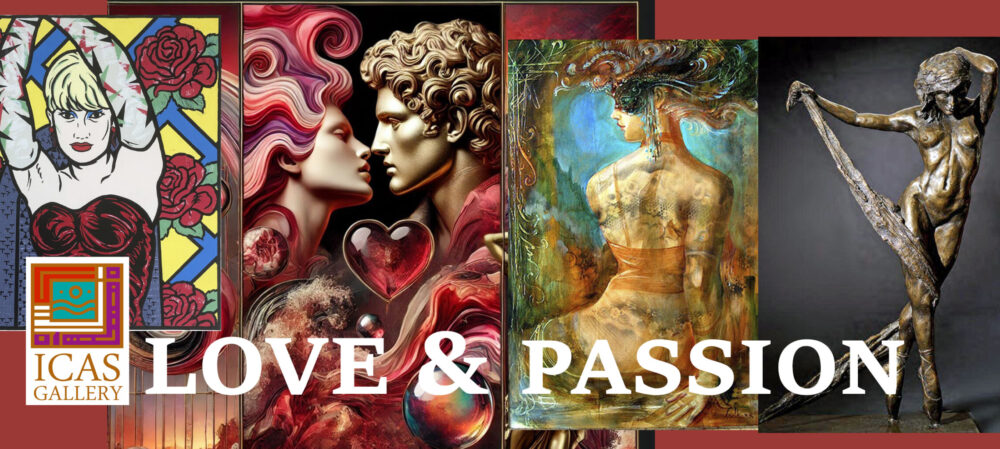Dance has long been a source of inspiration for artists across various mediums, including nude art and sculpture. The fusion of movement, form, and expression in dance has captivated artists throughout history, creating stunning artworks celebrating the human body in motion.
The earliest known bronze sculpture of the dancing Shiva dates back to the Chola dynasty in South India, around the 10th century CE.
The Dancing Shiva, or Nataraja, popularly represents the Hindu deity Shiva. This divine form of Shiva symbolizes the cosmic cycles of creation, preservation, and destruction. The image of Shiva dancing within a circle of flames represents the eternal rhythm of the universe.
In the realm of nude art, dance has served as a central theme and a dynamic narrative, allowing artists to traverse the beauty and dynamism of the human form. From classical depictions of mythological dancers to contemporary interpretations of modern dance, artists have used the medium to convey themes of grace, strength, and sensuality, evolving with the changing times and artistic sensibilities.
One of the earliest examples of dance-inspired nude art can be found in ancient Greek and Roman sculptures, such as the iconic Dancing Satyr statue or the Dancing Faun’s marble figure. These works celebrate the vitality and athleticism of the human body, reflecting the importance of dance in ancient cultures.
During the Renaissance, artists like Michelangelo and Leonardo da Vinci continued exploring the human form through their paintings and sculptures. While not exclusively focused on dance, their works often depicted figures in dynamic poses reminiscent of dancers, showcasing the movement’s influence on art.
In the 19th and 20th centuries, artists such as Edgar Degas and Auguste Rodin, driven by a profound fascination for dance, became renowned for depicting dancers in painting and sculpture. Degas, in particular, was enamoured by the ballet. His artwork frequently captured its behind-the-scenes moments, portraying dancers in various states of rehearsal and performance, a testament to his love for the art form.
Meanwhile, Rodin’s sculptures, such as “The Dance Movement,” exemplify his mastery of capturing the fluidity and energy of the human body in motion. His works often feature dancers in dynamic poses, conveying a sense of rhythm and vitality that resonates with viewers.
In more contemporary times, artists like Isamu Noguchi and Antony Gormley have continued to explore the intersection of dance and sculpture. Noguchi’s “Bust of Martha Graham” pays homage to the legendary dancer and choreographer, capturing her spirit and grace in stone. Though abstract in form, Gormley’s “Quantum Cloud” series evokes the fluidity and movement of dance through its interconnected steel figures.
 ICAS Gallery features a variety of artists who explore the genre of dance-inspired nude art and sculpture. Among these contemporary artists, Teresa Wells and Katya Gridneva have significantly contributed to this genre. Teresa Wells’ masterpiece, “Eternal Beauty,” is a limited edition series comprising 12 meticulously crafted sculptures that portray a Nude Bronze Dancer. Each sculpture embodies the timeless allure and grace of the human form in motion. With her attention to detail and sensitivity to form, Wells imbues each sculpture with a sense of ethereal beauty, inviting viewers to contemplate the enduring elegance of dance.
ICAS Gallery features a variety of artists who explore the genre of dance-inspired nude art and sculpture. Among these contemporary artists, Teresa Wells and Katya Gridneva have significantly contributed to this genre. Teresa Wells’ masterpiece, “Eternal Beauty,” is a limited edition series comprising 12 meticulously crafted sculptures that portray a Nude Bronze Dancer. Each sculpture embodies the timeless allure and grace of the human form in motion. With her attention to detail and sensitivity to form, Wells imbues each sculpture with a sense of ethereal beauty, inviting viewers to contemplate the enduring elegance of dance.
Katya Gridneva, another notable artist represented by ICAS Gallery, offers a poignant exploration of the balletic form in her work, “Ballerina Reflecting Pastel Study.” Through delicate pastel strokes, Gridneva captures the essence of the ballerina’s movement, evoking a sense of fluidity and lightness. Her study invites viewers to immerse themselves in dance, where every gesture and posture tells a story of dedication and grace. These works by Teresa Wells and Katya Gridneva exemplify the gallery’s commitment to showcasing contemporary interpretations of dance in nude art and sculpture. Through their masterful craftsmanship and artistic vision, these artists continue to enrich the dialogue surrounding the intersection of dance, beauty, and human expression.
We welcome enquiry for special commission.
 For all private or corporate commissions by our gallery artists,
For all private or corporate commissions by our gallery artists,
please get in touch with Sunil Vilas by calling
VIDEOS
ICAS Dance Art
The history of the earliest form of Dance art traces back to Indian origins, the period of the Vedas, which dates back to around 1000 B.C., and the image of Shiva, the Lord of Dance.
ICAS Vilas Art Gallery
21 Commerce Way
Garden Square Shopping Centre, Letchworth Garden City, Hertfordshire SG6 3DNUnited Kingdom (UK)Phone: 01462677455
Email: info@vilasart.co.uk
URL: https://www.vilasart.co.uk/
ICAS Vilas Art Gallery
Garden Square Shopping Centre,
Email: info@vilasart.co.uk
URL: https://www.vilasart.co.uk/






